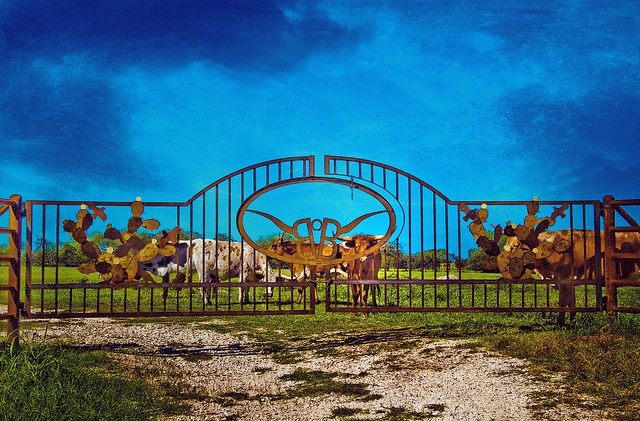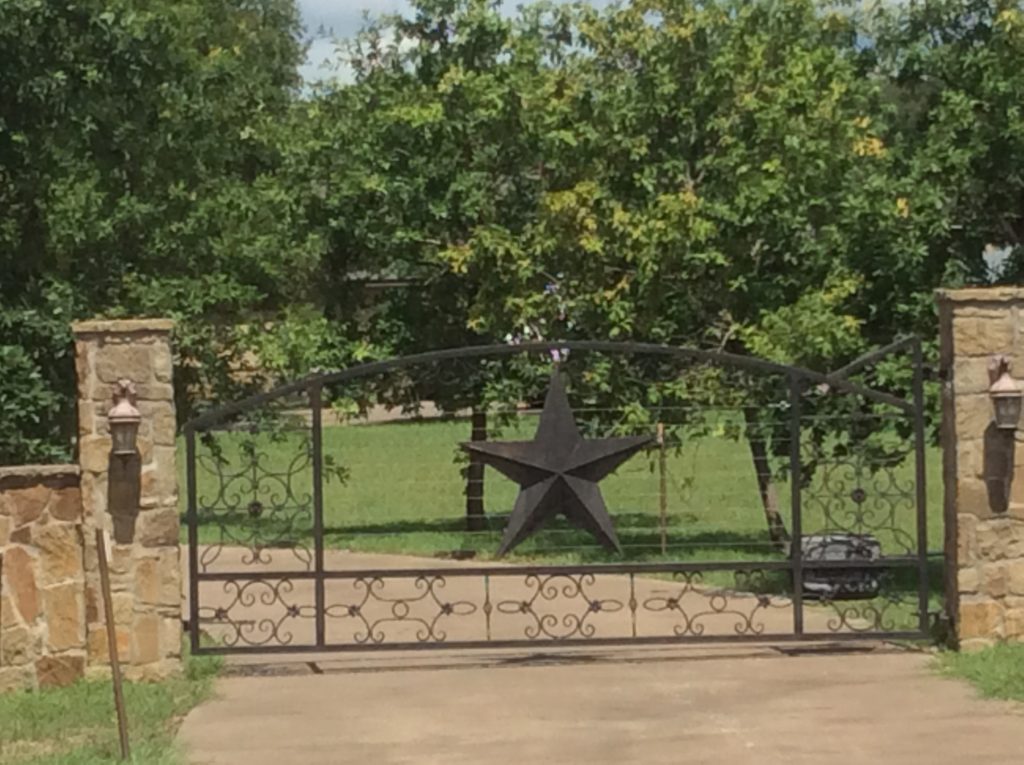
“The West is everything we want it to be: it is our potential for love and success, it is possibility and imagination. And the fence that defines the boundaries contains us, keeps us from getting lost in all of that possibility, saves us from straying too far from ourselves. I drive through the open gate, into the landscape within.” — The Secret Life of Cowboys by Tom Groneberg
Once one gets off the busy highways in the Texas Hill Country and hits the narrow “county roads,” “ranch roads,”” farm-to-market” and “ranch-to-market” roads one is in for a Texas-size treat.
One is dazzled by the beautiful scenery of rugged rolling hills flush with Texas oak, cedar and mesquite, wide-open vistas, expansive vineyards, winding rivers and deep swimming holes, and – at the right time of the year – embellished even more by the most bountiful and varied fields of those famous Texas wildflowers.
Then, there are those idyllic little towns and hamlets with names like Luckenbach and Stonewall and Gruene; towns with historical town squares, antiques stores and, of course, quaint little cafes and restaurants, every one of them serving “the best BBQ in Texas.”
If that is not enough to fill one’s weekend wanderlust, there are always those famous, Texas-sized (hundreds of thousands of acres) and not-so-Texas-sized ranches dotting the Texas countryside. The latter, “just” a few thousand acres.
The only problem is that, even in those “not-so-Texas-sized ranches,” except for a Longhorn and a couple of lonely horses here and there, one does not really get to see the main herd or appreciate the expanse of the ranch and what must be the large and beautiful ranch houses, barns, stables and outbuildings at the end of a sometimes mile-long entrance road.
But do not despair, for a wealth of large, magnificent ranch gates more than compensate for it.
And indeed, the ranch gates of Texas, richly decorated with wrought-iron silhouettes of cattle, horses, wagon wheels, owners’ monograms and of course the Texas star, are world renowned. Entire books, photo collections and articles have been devoted to them and an entire industry has developed in Texas to meet the demand for those beautiful gates.
In his “A tour of Texas ranch gates – whimsical cowboy art,” Witold Skrypczak explains:
Decorated gates are a form of expression for ranchers who wish to show their presence and perhaps their individuality…Subtlety is not the goal: A design of longhorn cattle, for example, needs no further explanation…The designs are sometimes meant to be humorous, such as one showing a cowboy chased by a bull. And there’s a charming simplicity to the scene of a rancher playing his guitar by a campfire.
In “Changing Places: Ranch Gates of The Southwest,” Douglas Manger attributes the designs to “making a statement,” to being indicative of what the ranch , or the owner, is all about (“what is behind the gate”), to helping “distill the rancher’s vision (or bolster a Texas-sized ego).”

via flickr.com
Living at the edge of the Texas Hill Country, what a better way to spend a day than by cruising along the scenic roads, byways and backroads finding, admiring and photographing as many of the ranch gates as one can – whether they are as ornate as the one above, or as simple and rustic as the one below.

An what a better companion than one’s grandson, home for a few days from college and, in addition, a fabulous photographer.
Here are some of the gates of Texas.





Perhaps the most famous ranch in Texas, in addition to the legendary King’s Ranch, is the Lyndon Baines Johnson (LBJ) ranch in Stonewall, Texas, known during Johnson’s presidency as the Texas White House and now part of the Lyndon B. Johnson National Historical Park.
While I have visited the Park and the (working) ranch before, I had never seen its gate.
At the conclusion of the “photo shoot” we located the ranch’s gate and were surprised by its modesty, simplicity and condition (below). Thus, not all Texans ranch gates are grand. Nevertheless, each one is Texas charming, Texas unique and has a story to tell.

All photographs, except as noted, by author’s grandson, Preston Werner.
To see more of his work, please visit epochist.com
















